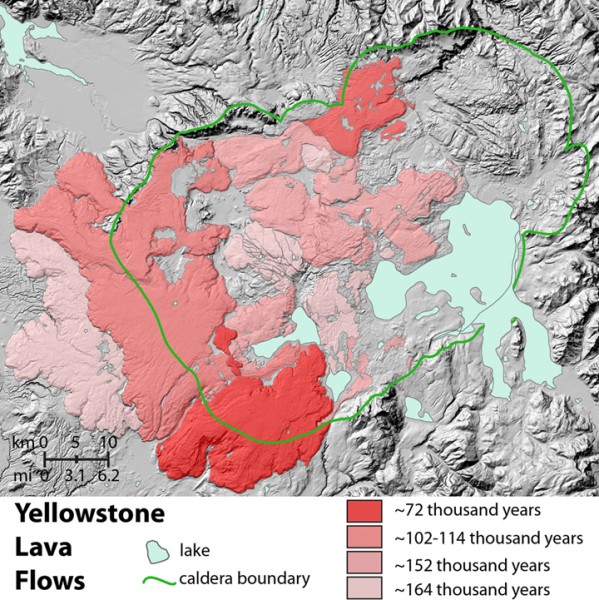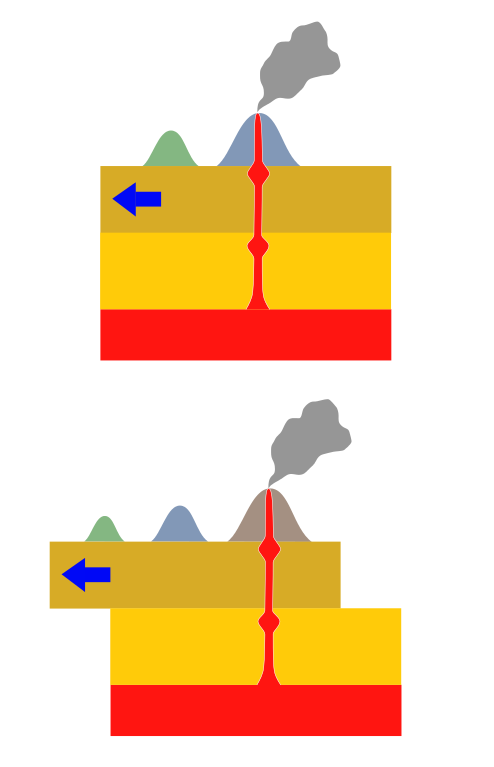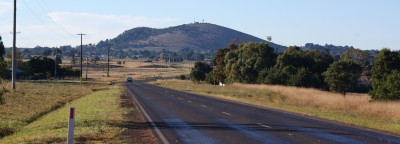Volcanoes
Article curated by Ed Trollope
The core of the Earth is hot - so hot that the metal and rock transforms into magma - a mixture of molten and semi-molten rock. If and when this magma reaches the Earth's surface, it forms a volcano. Volcanoes are terrifying and awe-inspiring things, and the power of their eruptions can have very wide ranging effects which, in the biggest eruptions, may even be felt across the world. We have a good understanding of the basics behind vulcanism, but they still hold a lot of mystery for us and the dangerous nature of volcanoes can make studying them rather difficult.
![Active stratovolcano Mount Merapi Photo by Crisco 1492 [CC BY-SA 3.0] via Wikimedia](/img/sci/640px-mount_merapi_in_2014.jpg)
Volcanic eruptions can be hugely devastating events, wiping out towns and villages in the wake of the magma flows or ash clouds. Because of this, huge amounts of work around the world is going into predicting these eruptions so that people can be evacuated to safety. But while we do know some of the warning signs, eruptions are still impossible to predict accurately.
The type of magma in a volcano has a big effect on whether an eruption will be dramatic or gentle. Volcanoes with very runny magma, like those in Hawaii, are generally safe – the gas that builds up underground can escape through the magma, leading to a volcano that constantly bubbles and spits, but never explodes dramatically. However, in volcanoes with dangerous, viscous magma, gas gets trapped underground leading to a build up in pressure. This, along with the magma moving in response, often causes earthquakes and tremors which can be detected using seismometers. It may even be possible to detect the swelling of the magma chamber under the volcano, much like a balloon being inflated under a pile of sand. Unfortunately, while these are signs the volcano is increasing its activity, and the chances of an eruption are growing, there is no way to predict how soon an eruption will happen – or whether one will even happen at all! Sometimes volcanoes go through periods of increased activity, then settle down again, and don't erupt for tens or even hundreds of years. In other cases, the warning signs will only start appearing days before a massive eruption.
This leads to huge problems both for the scientists trying to predict eruptions, and for the politicians responsible for deciding when to evacuate people. Possibly because volcanic soils tend to be especially fertile, many cities and villages exist perilously close to active volcanoes. If Mount Vesuvius, which is still active, erupts again in an explosion of a similar scale to the one that destroyed Pompeii, it is estimated 600,000 people will need to be evacuated[1], a feat expected to take seven days. Unfortunately, it isn't clear whether the volcano will give us that much warning, and the costs of a false alarm would be huge, leading to a hugely difficult political and scientific situation.

Supervolcanoes
Volcanoes are formed at the edges of the Earth's plates. As the plates move, they pull away from each other in some places and grind up against each other in others, and it is at these points that volcanoes and earthquakes occur. The very biggest volcanoes, which are capable of producing eruptions thousands of times larger than "normal" volcanic eruptions, are called supervolcanoes. Perhaps unsurprisingly, there is a lot of hype about supervolcanoes and their potentially devastating effects. This is not only because supervolcanoes have the potential to devastate the local environment and be felt around the world, but because they could actually lead to our extinction. How? Well, when a volcano erupts, it projects huge amounts of ash, dust and carbon dioxide into the atmosphere. A super volcano could possibly put out enough dust debris to shut off photosynthesis - killing off plants, impacting food chains, and leading to mass extinctions, not to mention massive volumes of CO2, which makes for accelerated climate change, loss of habitats, extreme weather events, and loss of extremophiles[2][3]. Scientists have estimated that massive supervolcanoes such as the one under Yellowstone Park could block out sunlight and lead to global cooling as much as 10 °C over 10 years. And it’s not only supervolcanoes. Enough smaller volcanoes, erupting at the same time for a long time, could have the same effect as one giant supervolcano. The last supervolcanic eruption that we know of happened 70,000 years ago at Lake Toba, Indonesia, blocking the sun for 6-8 years and causing 1000 years of global cooling. That was roughly the time when mankind first started engraving patterns onto stones during the stone age, and still several thousand years before the bow and arrow was believed to have been invented. Various films have visualised the potential eruption of supervolcanoes such as Yellowstone, and some media often theorise about how imminent they may be – but should we be concerned? So far, no-one really knows. We haven't as of yet found any large magma chambers that would suggest a supervolcano, but this doesn't necessarily mean that we're safe. Some geologists believe we just may not have found the chambers yet, while others feel that supervolcanoes develop and erupt too quickly for us to do so. For now, the search for these large and potentially catastrophic magma chambers continues.

 2
2
Hotspot Volcanoes

Some scientists think that hotspot vulcanism is caused by plumes of magma from an unusually hot region of the mantle rising up to the surface. As the tectonic plates move slowly, this leads to chains of volcanoes leading away from the hotspot.
On the other hand, other scientists hypothesise that they are caused by extensions of the lithosphere instead – a fundamental plate tectonic process controlling the collapse of mountain belts, the break-up of continents and the formation of new oceanic basins
[9]. As Professor Hugh Rollinson from the University of Derby noted in his review of a book calling into question the plume hypothesis, in [the] field of early Earth history .. plumes are used to explain away otherwise difficult-to-explain observations. This is clearly both lazy and wrong
, but also noted that he was not convinced that the time has come to debunk the plume hypothesis
.
In 2011, scientists from MIT and Purdue University suggested that Hawaiian volcanic activity is fed by a massive hot pool of rock lurking in Earth's mantle some 1,000 kilometres to the west of the islands
[10].
Observations of future eruptions may perhaps lead to the answer, which may in turn help create a fuller picture of mantle convection.

Volcanoes and the Structure of the Earth
In the Earth’s mantle there are convection currents: currents caused when the hottest magma rises to the top of the mantle, cools, and sinks back down again in a cyclic motion. These convection currents carry heat from the core to the crust. However, it's still disputed exactly how they work. Some scientists think the currents act in two or more layers, whilst others think they act over the whole mantle. Observations of volcanoes have led to the suggestion of a dual-layer system within the mantle. This theory is also supported by evidence from earthquakes in subduction zones which suddenly stop travelling through the mantle at the mantle transition zone - a discontinuity at about 670km below the surface of the Earth. However, tomographic imaging techniques give a picture that strongly argues for just a single layer, with convection currents across the whole mantle. So whether or not there is more than one layer, or whether scientists are getting these different results for some other reason, remains an open debate.
Learn more about Mantle Convection.


 2
2Discovering New Volcanoes
It's easy to imagine that these towering mountains of fire would be quite easy to spot, but as it happens they can also be quite sneaky. Many volcanoes lie dormant for extremely long periods of time, just waiting until they erupt again. In June 2014, geologists at the Monash University School of Geosciences announced the discovery of three previously unrecorded volcanoes in south-east Australia. Lead researcher Julie Boyce said Though it's been more than 5000 years since the last volcanic eruption in Australia, it's important that we understand where, when and how these volcanoes erupted.
Covering an area of 19,000 square kilometres in Victoria and South Australia, with over 400 volcanoes, the Newer Volcanics Province features the youngest volcanoes in Australia - and we may not have found all of them yet. Because the province is still active, it's entirely possible that we may be faced with eruptions there in the future.


Effects of Volcanic Eruptions
In 2010, a megaquake in Chile caused a number of volcanoes to shrink in height[4]. The same thing happened in 2011, in Japan's Tohoku region[5], suggesting it may be a widespread phenomenon.
Following both quakes, the volcanoes situated nearby to the ruptured faults subsided by up to 15 cm. Scientists suggest the reasons these volcanoes subsided are different for the two cases: the sinking in Japan was probably caused by subsidence of magma reservoirs and hot, weak rocks beneath the volcanoes, whereas the sinking in Chile was probably caused by a release of hydrothermal fluids from beneath the volcanoes
(Nature Geoscience). A consensus on what caused the volcanoes to sink hasn't yet been reached, but even without it, these observations highlight that large earthquakes cause significant changes in volcanic regions, and may therefore influence volcanic hazard
.

Underwater, it's possible for volcanoes to pose a hazard even when they're not erupting. This is because volcanoes often go hand in hand with earthquakes, and earthquakes can cause tsunamis. However, while all tsunamis are caused by earthquakes, not all earthquakes cause tsunamis – and scientists are attempting to understand the factors that determine whether an undersea earthquake will lead to a tsunami or not.
In June 2014, researchers at Imperial College London and GNS Science in New Zealand suggested that extinct undersea volcanoes may cause a "sticking point" between tectonic plates[6]. The researchers used data collected during oil and gas exploration together with eye witness accounts relating to two tsunami earthquakes, which happened off the coast of New Zealand’s north island in 1947. Using this data, the team were able to locate two extinct volcanoes off the coast of Poverty Bay and Tolaga Bay that were squashed and sunk beneath the crust, and they believe these volcanoes were a contributing factor in the 1947 tsunamis. Further research will be required to locate other such volcanoes, and determine whether or not any of them can be associated with known tsunami events. If the researchers are correct, this could provide a valuable clue towards developing early warning signals for future events.

Volcanoes are relatively rare occurrences today, but millions of years ago they were far more common. 70 million years ago, during the late Cretaceous period, the volcanoes of the "Deccan Traps" in India were particularly active. For tens of thousands of years, they covered the land with ash and lava, and pumped unimaginable quantities of carbon dioxide and sulphur out into the atmosphere. We don't know exactly what effect this had on the environment on a global scale, but it could well have played a significant role in the extinction of the dinosaurs 66 million years ago.

Extra-terrestrial Volcanoes
It's not just here on Earth that volcanoes have scientists scratching their heads. Elsewhere in the solar system, they are equally confusing if not even more so. Sometimes, it's the absence of volcanoes that seems strange. For example, why are there no active volcanoes on the moon? Our moon is covered in the tell-tale signs of past volcanic activity, and we can tell from seismometers left by the Apollo missions that there are still moonquakes occurring today. This suggests that the lunar mantle may still contain molten material, although we don't know for certain. Molten rock is usually less dense than solid rock, and this is what causes it to rise through the mantle and crust, resulting in volcanic eruptions. Why this isn't occurring on the moon if there is liquid material within the mantle, is unclear.

![Lunar structure © Kelvinsong [CC BY 3.0] via wikimedia](/img/sci/982px-moon_diagram.png)
Are there still volcanic eruptions on Mars? Mars is home to the largest volcanoes in the solar system, but there is no evidence of any major volcanoes erupting within the last hundred million years. There is some evidence, however, of minor eruptions within the last two million years or so, so it is entirely possible that large eruptions may still take place from time to time. It's extremely unlikely that we'd witness such an eruption, though. Firstly, because of their rarity (if indeed they ever occur). Secondly, because to do so would require having a spacecraft such as Mars Express in orbit and practically directly above the event while it happened - a highly unlikely confluence of events.

Much like Mars, we know there are volcanoes on Venus. But what we don’t know is whether there are any active ones left today. In the early 90's the Magellan space probe revealed that there was fairly recent volcanic activity at Venus’ highest volcano[7], and so equally there may be current activity at others. The main supporting evidence is the variations in sulphur in Venus’s upper atmosphere which could be explained by the presence of volcanic eruptions[8]. It isn't the only explanation possible though, as Venus does have a rich and complicated atmosphere, the general circulation of which may purely explain the observations of sulphur levels. In order to know definitively whether there are active volcanoes on Venus, more evidence is required.
Venus is not as popular a destination for interplanetary science missions as Mars, but the Japanese Ataksuki spacecraft has been in orbit since 2015 with a suite of optical, infrared and UV cameras designed to investigate the Venusian atmosphere and weather systems.

This article was written by the Things We Don’t Know editorial team, with contributions from Ed Trollope, Jon Cheyne, Ginny Smith, and Johanna Blee.
This article was first published on 2018-01-14 and was last updated on 2018-04-03.
References
why don’t all references have links?
[1] Pareschi M.T., Cavarra L., Favalli M., et al., (2000) GIS and Volcanic Risk Management Natural Hazards :361-379 DOI: 10.1007/978-94-017-2386-2_16
[2] Michael R. Rampino. Supereruptions as a Threat to Civilizations on Earth-like Planets. Icarus, 156, (2002) 562–569, doi:10.1006/icar.2001.6808.
[3]Morgan T. Jones, R. Stephen J. Sparks, Paul J. Valdes. The climatic impact of supervolcanic ash blankets, Clim Dyn (2007) 29:553–564, doi:10.1007/s00382-007-0248-7.
[4] Pritchard, M.E., et al., (2013) Subsidence at southern Andes volcanoes induced by the 2010 Maule, Chile earthquake. Nature Geoscience 6:632-636 DOI: 10.1038/ngeo1855
[5] Takada, Y., and Fukushima, Y., (2013) Volcanic subsidence triggered by the 2011 Tohoku earthquake in Japan. Nature Geoscience 6:637-641 DOI: 10.1038/ngeo1857
[6] Bell, R., et al., (2014) Hikurangi margin tsunami earthquake generated by slow seismic rupture over a subducted seamount Earth and Planetary Science Letters 397:1-9 DOI: 10.1016/j.epsl.2014.04.005
[7] Solomon, S,C., et al., (1992) Venus tectonics: An overview of Magellan observations Journal of Geophysical Research 97(E8):13199- DOI: 10.1029/92JE01418
[8] Marcq, E., et al., (2013) Variations of sulphur dioxide at the cloud top of Venus’s dynamic atmosphere Nature Geoscience 6(1):25-28 DOI: 10.1038/ngeo1650
[9] Rosenbaum, G., Weinberg, R,F., Regenauer-Lieb, K., (2008) The geodynamics of lithospheric extension Tectonophysics 458(1-4):1-8 DOI: 10.1016/j.tecto.2008.07.016
[10] Cao, Q., et al., (2011) Seismic Imaging of Transition Zone Discontinuities Suggests Hot Mantle West of Hawaii Science 332(6033):1068-1071 DOI: 10.1126/science.1202731
Recent volcanoes News
Get customised news updates on your homepage by subscribing to articles











